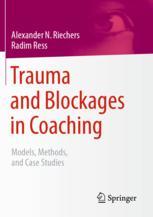When the philosopher Heraclitus speaks of the fact that we cannot step into the same river twice, his words can remind us of the continuity and dynamics of change. The flow of life always brings new and familiar situations we must face in our private or professional everyday life. Economic, technical, and social changes, as well as crises and strokes of fate, give our environment a new face at any time and demand new reactions. Especially in the economy, leaders and employees are challenged more than ever due to globalization, digitalization, and high workload. To avoid losing oneself in this flow as a driven person or even going under, a human being needs stability and firmness. At the same time, however, they must also remain adaptable to react flexibly to incoming situations. Thus, life runs within this polarity between stability and flexibility
چکیده فارسی
وقتی فیلسوف هراکلیتوس از این واقعیت صحبت می کند که ما نمی توانیم دو بار به یک رودخانه قدم بگذاریم، سخنان او می تواند تداوم و پویایی تغییر را به ما یادآوری کند. جریان زندگی همیشه موقعیت های جدید و آشنا را به ارمغان می آورد که باید در زندگی روزمره خصوصی یا حرفه ای خود با آن مواجه شویم. تغییرات اقتصادی، فنی و اجتماعی و همچنین بحرانها و سکتههای سرنوشتساز، هر لحظه به محیط ما چهره جدیدی میبخشد و واکنشهای جدیدی را میطلبد. به خصوص در اقتصاد، رهبران و کارمندان به دلیل جهانی شدن، دیجیتالی شدن و حجم کاری زیاد بیش از هر زمان دیگری با چالش مواجه هستند. انسان برای از دست دادن خود در این جریان به عنوان یک فرد رانده یا حتی زیر بار رفتن، نیاز به ثبات و استحکام دارد. با این حال، در عین حال، آنها همچنین باید سازگار باقی بمانند تا به شکلی انعطاف پذیر به موقعیت های پیش رو واکنش نشان دهند. بنابراین، زندگی در این قطب بین ثبات و انعطاف پذیری جریان دارد
ادامه ...
بستن ...
1Introduction 1.1 Trauma Work in Coaching Panta rhei – Everything flows. Heraclitus of Ephesus When the philosopher Heraclitus speaks of the fact that we cannot step into the same river twice, his words can remind us of the continuity and dynamics of change. The flow of life always brings new and familiar situations we must face in our private or professional everyday life. Economic, technical, and social changes, as well as crises and strokes of fate, give our environment a new face at any time and demand new reactions. Especially in the economy, leaders and employees are challenged more than ever due to globalization, digitalization, and high workload. To avoid losing oneself in this flow as a driven person or even going under, a human being needs stability and firmness. At the same time, however, they must also remain adaptable to react flexibly to incoming situations. Thus, life runs within this polarity between stability and flexibility. Development Approach—The Stable Center Therefore, a person who does not lose themself needs a stable center in which they can rest as a personality and withstand the external pressures of the environ- ment in inner balance. This center, at peace within itself, is at the same time also flexible and receptive to impulses from fellow human beings and can use these for its constant renewal and further development. Especially in the professional environment, the abilities to take criticism, give and receive feedback, and inno- vate are among the essential qualifications of a thriving leadership culture. Most of the topics we are confronted with as coaches can be traced back to a blockage or a substantial imbalance within the aforementioned field of tension between
ادامه ...
بستن ...










